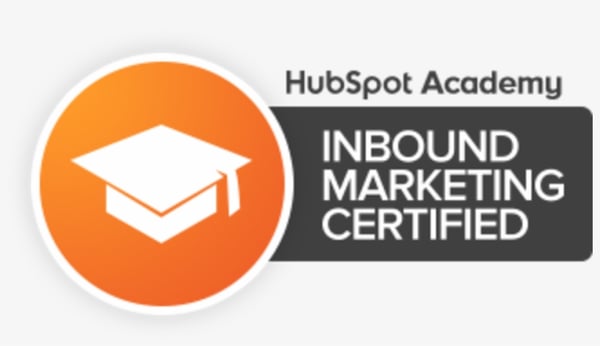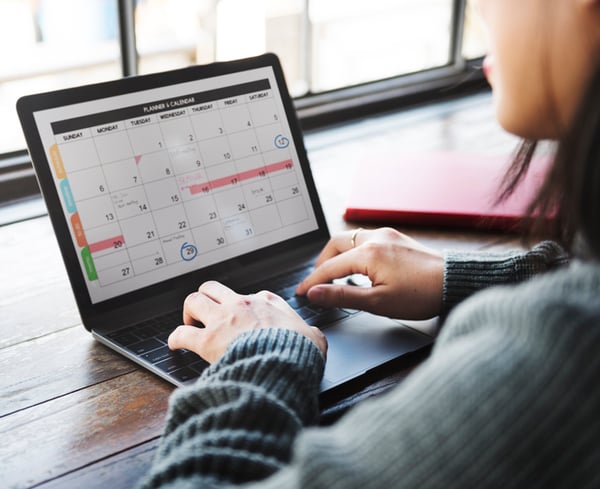Inbound Marketing Blog
for Manufacturers and Healthcare Companies
5 Takeaways From Hubspot’s Inbound Certification for the Beginner

“Inbound marketing is a business methodology that attracts customers by creating valuable content and experiences tailored to them.”
-- HubSpot
If you’re new to the world of inbound marketing, you may be wondering what that means to your business and, more importantly, its bottom line.
Unlike traditional marketing, inbound marketing brings customers to you through content they simply need. In essence, inbound marketing is about building long-term relationships with customers through meaningful connections and not an overt sales pitch.
Just how does inbound marketing help you reach your next customers? It’s all about knowing your customer and what they’ll need during their buying process.
For those new to inbound marketing, here’s five key takeaways from getting certified by HubSpot in inbound marketing:
1. The inbound marketing cycle builds trust
Inbound marketing operates with a flywheel of sorts in mind. Its three customer-centric components that keep it moving are:
- Attracting
- Engaging
- Delighting
These components help your business guide customers along while being helpful and not overbearing. Though each one of these elements requires different strategies and tactics, they ultimately help your business reach the right customer the right way with the right information. These efforts help give your business credibility and set the stage for a long-term relationship with each of your customers.
2. Let’s really get to know your next customer
Customers are very self-aware; they are individually sophisticated and don’t entirely appreciate being lumped into categories on a spreadsheet or viewed as just a number.
Through inbound marketing you can drill down a bit more to get beyond the vague categorization and better understand your customer and what makes them tick. This is done through creating buyer personas -- semi-fictitious profiles of the people you’re trying to reach.
Buyer personas take the target market you’ve identified and dives into exactly who your ideal customer is -- from their age and education level to the challenges they’re facing or where they hang out online. That last bit is important to pay attention to, as the vast majority of shoppers conduct online research about the product they’re intending to buy.
3. News you can use
Because customers spend so much time online doing their homework before making a purchase, they aren’t necessarily in the mood for a sales pitch. In fact, most avoid them. That’s where inbound marketing comes in handy.
In reaching potential clients while they’re on the second step of their buyer’s journey, it’s critical to engage them with information that’s actually relevant to them and provide real information they can actually use -- content that clicks.
What does that look like?
One of the great things about inbound marketing practices is there are many ways to provide meaningful content to consumers, such as:
- Blogs
- Social media posts
- Video
- Podcasts
- E-books
How does inbound marketing work in the “real world?”
Take, for instance, an engineer who’s designing their business’s next big product and is trying to decide if using galvanized steel is best. While scouring the internet doing research, they’re not looking for a great deal; they want information. That’s where a well-researched and helpful blog post, ebook, or video produced by your company can come in handy. The information you provide educates that engineer and helps them along in their learning process. While your company didn’t make an overt sales pitch, it did start a relationship with the engineer -- one that now has potential to turn into a big order for your company.
4. Inbound marketing requires patience

Put simply, inbound marketing efforts take time; it does not produce overnight results.
Like anything with a good strategy, there’s a lot of work that goes into all stages of it, from planning and development to implementation and evaluation.
Customers are complex and there are plenty of tools out there to help companies make the best decisions possible to reach them. Still, creating and tracking the content that resonates with them can take weeks and months before you see results. With the right strategy -- one rooted in research and centered around your ideal customer -- an inbound campaign can be one of the biggest contributors to your sales pipeline.
It’s important to keep in mind that inbound marketing is a marathon, not a sprint.
Your best customer is the one you already have
The relationship between inbound marketing campaigns and the customer isn’t one-sided; there’s an exchange of information on both sides.
Your current customer base can tell you quite a bit -- what’s working in your marketing efforts or what’s not, where they’re being reached, or how satisfied they are among other things. Its that data collected through sales figures, website traffic, and surveys that can give you a more complete picture of how your business is doing and what it can expect in the months to come.
Your current customer base can also tell others about you. Now more than ever, word of mouth is one of the main ways people learn about products and businesses -- and that spans everything from conversations between friends to reading buyer reviews online. A satisfied and well-served customer just might become one of your company’s biggest fans, making referrals to your business to their friends and family, liking and sharing your posts on social media, or becoming a repeat patron.
Our Blogs, Direct to Your Inbox!
How to Audit your Online Marketing
If you are executing digital marketing, congratulations! You are most likely already one step ahead of your competition, and making strides to meaningfully connect with prospects online. But, how do you know if you’re seeing continual success year over year, and improving your metrics?
Without the tools in place to analyze and benchmark your efforts, it is impossible to scale your online marketing and ensure continuous success.


